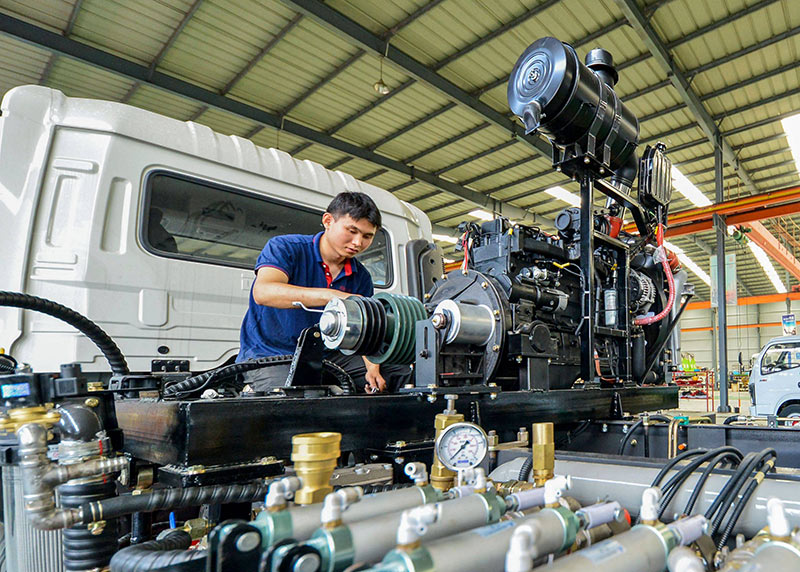The fourth industrial revolution has given rise to the rise of cutting-edge technologies such as cloud computing, big data, 3D printing, artificial intelligence, and virtual reality. These technologies are subverting traditional manufacturing methods and drawing a new blueprint for the future of manufacturing.
Although technologies such as 5G technology, artificial intelligence, and 3D printing are eye-catching, their application in global manufacturing still lags behind, and it is estimated that more than 70% of manufacturing companies have not made significant progress in this regard.
The manufacturing industry is in a critical stage of transformation and development, with the goals of improving factory operation efficiency, improving supply chains and business models, reducing costs, maximizing profits, and strengthening human resources. To achieve these goals, manufacturers not only need to lay out production and manufacturing but also need to introduce and apply innovative technologies of the fourth industrial revolution.
The outbreak of the new coronavirus has impacted the logistics industry and global supply chains, and many industries have had to suspend operations. However, crises present both challenges and opportunities. In this time of crisis, some companies are still eager to succeed and stand out in the market.
Faced with the sudden crisis, many companies have re-examined their manufacturing and business strategies. Some international manufacturers have taken the lead in adopting Fourth Industrial Revolution technologies and have become industry models. Some forward-looking manufacturers have applied advanced manufacturing technologies on a large scale and achieved great success by improving operational efficiency, improving supply chains, and enhancing customer experience.
Artificial intelligence, 3D printing, and the industrial Internet of Things are the technologies that have received the most attention. They are rapidly changing the manufacturing landscape and are expected to become the main direction of corporate investment.

Artificial intelligence makes machines more intelligent by simulating human thinking and behavior. Artificial intelligence technology relies on large amounts of external and internal data, including supplier, customer, trend forecast, demographic, and other data. Manufacturers can use this data to respond to market changes and external disruptions more efficiently.
At present, artificial intelligence has been widely used in agriculture, communications, medical care, transportation, aviation, finance, and other fields. In some countries, artificial intelligence technology has made remarkable achievements in the fields of smart medical care, smart cities, smart logistics, smart transportation, and smart environmental protection, and has gradually penetrated into the real economy and people’s livelihood areas.
3D printing is another innovative technology in the fourth industrial revolution that automatically stacks materials to create solid structures without the need for traditional machining or molds. Compared with traditional manufacturing, 3D printing not only shortens the product development cycle, improves production efficiency, but also reduces costs. It also eases supply chain pressure when demand fluctuates.
It is predicted that 3D printing technology will usher in an explosive period, and 97% of manufacturers expect to increase its usage in the next five years significantly. Many manufacturers have begun to combine 3D printing with traditional manufacturing methods to produce stronger parts at lower costs and in creative ways. 3D printing technology reduces material waste in the aviation field and promotes personalized medicine in the medical field.
However, 3D printing technology alone is not enough. The development of the manufacturing industry also requires the industrial Internet of Things to integrate user demand information and achieve intelligent production. The Industrial Internet of Things can monitor inventory, performance testing, resource allocation, etc., bringing huge changes to the manufacturing industry.
The Industrial Internet of Things is no longer limited to a certain field, it can be applied on a large scale in production lines. Manufacturers can monitor inventory, performance testing, resource allocation, etc. through the Industrial Internet of Things to improve operational efficiency and reduce costs. Forecasts show that the industrial IoT market will increase to US$110.6 billion by 2025, and manufacturers plan to increase spending on smart factory technology.
The development of artificial intelligence, 3D printing, and the industrial Internet of Things has created a unique smart labor market in which technology professionals play a key role. These professionals advance digital literacy through data initiatives and promote technology adoption, including data use and storage, technology awareness, data visualization and analysis, operational process improvement, and more. This technological and creative foresight will profoundly affect companies and determine their competitiveness in the global manufacturing market.
